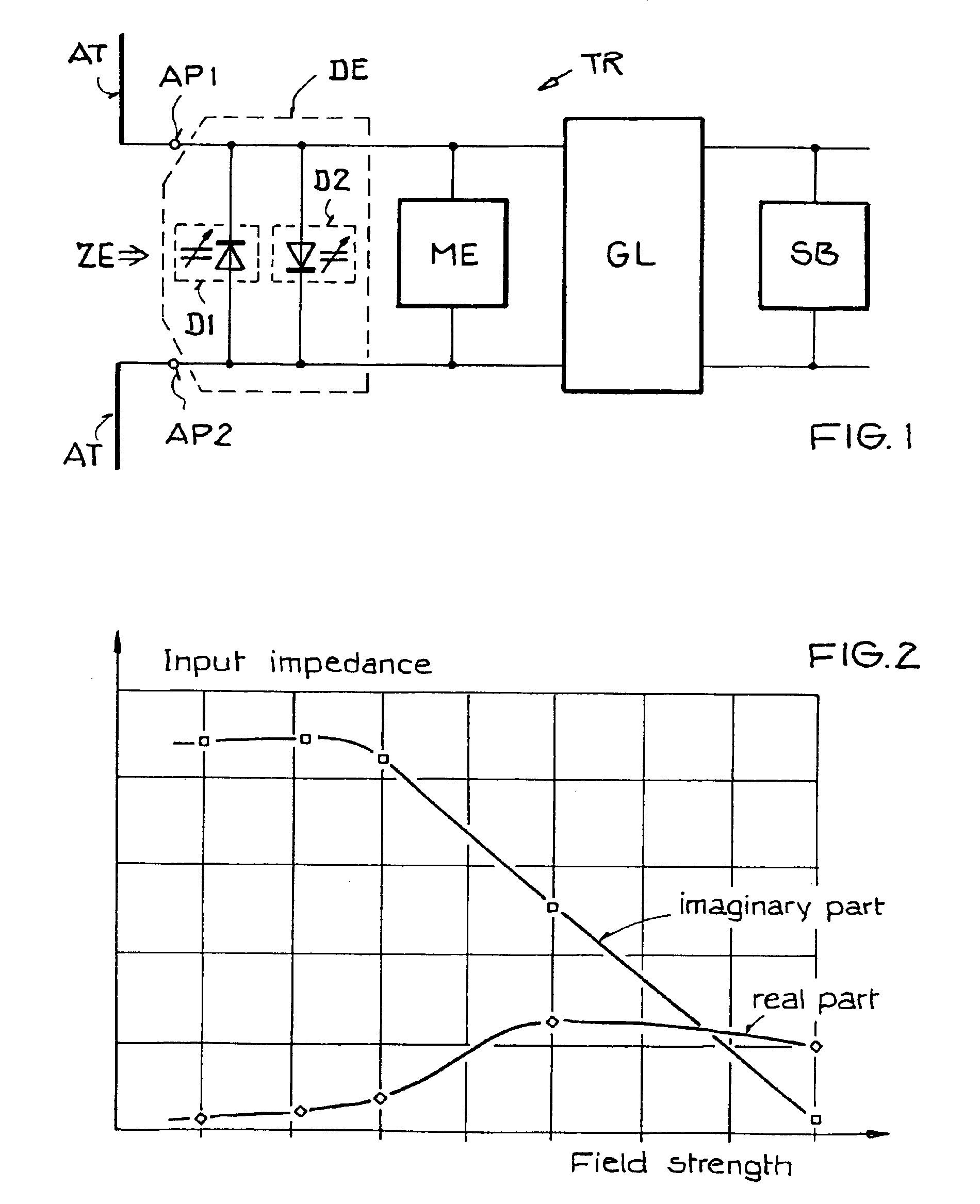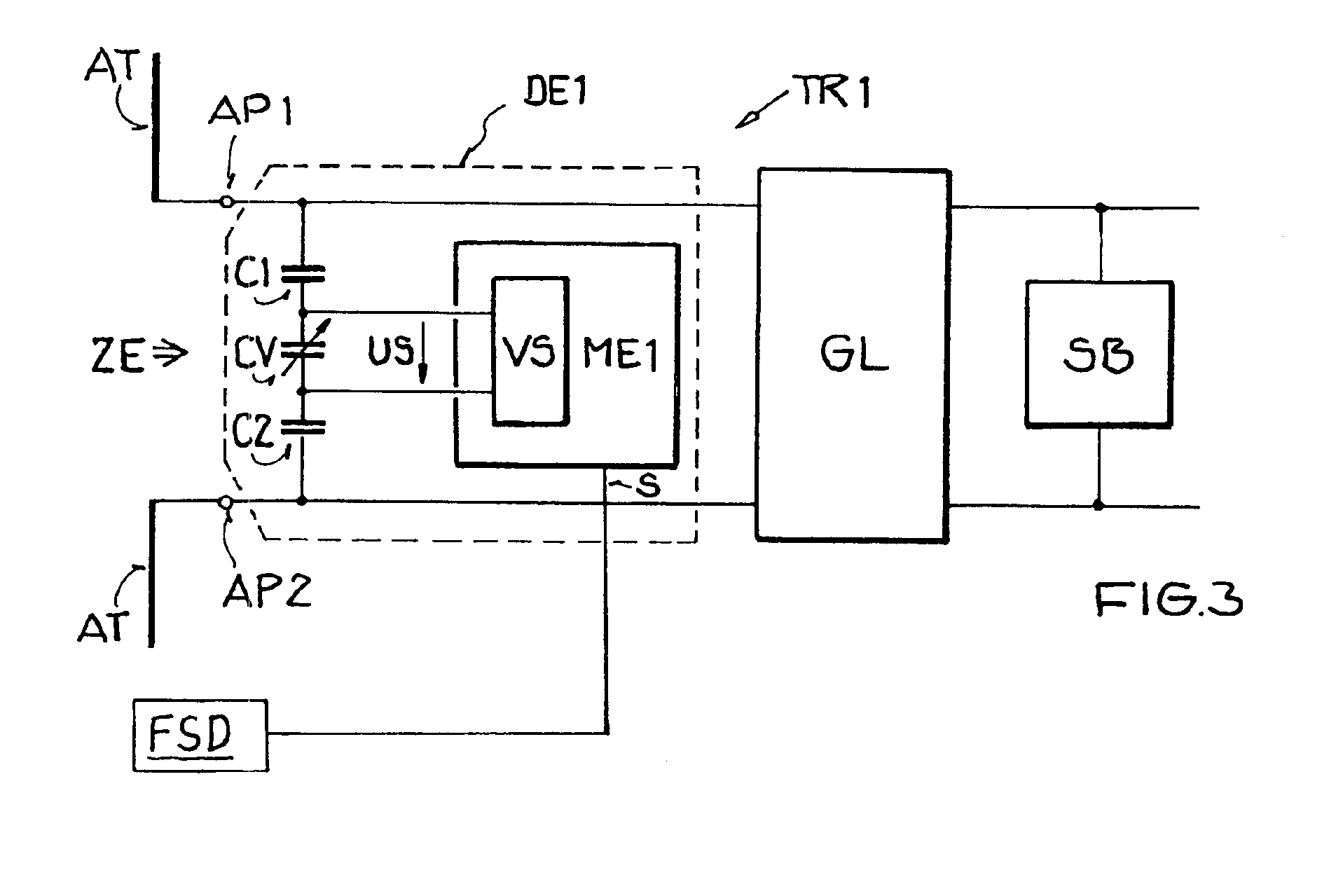Circuit arrangement and method for deriving electrical power from an electromagnetic field
ircuit arrangement technology, applied in the field of circuit arrangement and a method for deriving or extracting electrical power from a high frequency electromagnetic field, can solve the problems of destroying the rectifier requiring a large or large real part of the input impedance, and destroying the rectifier itself or other circuit components, so as to prevent the destruction, damage or failure of circuit components.
- Summary
- Abstract
- Description
- Claims
- Application Information
AI Technical Summary
Benefits of technology
Problems solved by technology
Method used
Image
Examples
Embodiment Construction
[0030]The schematic block circuit diagram of FIG. 1 shows a circuit arrangement for deriving electrical power from a received electromagnetic field, whereby this circuit arrangement is integrated into a passive transponder TR. The overall or other circuitry of the transponder TR (not shown in detail) may be according to any conventionally known circuit arrangements of passive transponders, remote sensors, or the like.
[0031]The illustrated embodiment of the inventive circuit arrangement comprises an antenna AT having two connection poles or terminals AP1 and AP2, a detuning unit DE, a modulation arrangement or modulator ME, a rectifier GL, and a voltage limiter SB. The detuning unit DE, the modulator ME and the rectifier GL are each directly connected in succession to the two antenna terminals AP1 and AP2. Being “directly” connected means connected with only conductors therebetween and without any other circuit components interposed therebetween. The voltage limiter SB is connected t...
PUM
 Login to View More
Login to View More Abstract
Description
Claims
Application Information
 Login to View More
Login to View More - R&D
- Intellectual Property
- Life Sciences
- Materials
- Tech Scout
- Unparalleled Data Quality
- Higher Quality Content
- 60% Fewer Hallucinations
Browse by: Latest US Patents, China's latest patents, Technical Efficacy Thesaurus, Application Domain, Technology Topic, Popular Technical Reports.
© 2025 PatSnap. All rights reserved.Legal|Privacy policy|Modern Slavery Act Transparency Statement|Sitemap|About US| Contact US: help@patsnap.com



